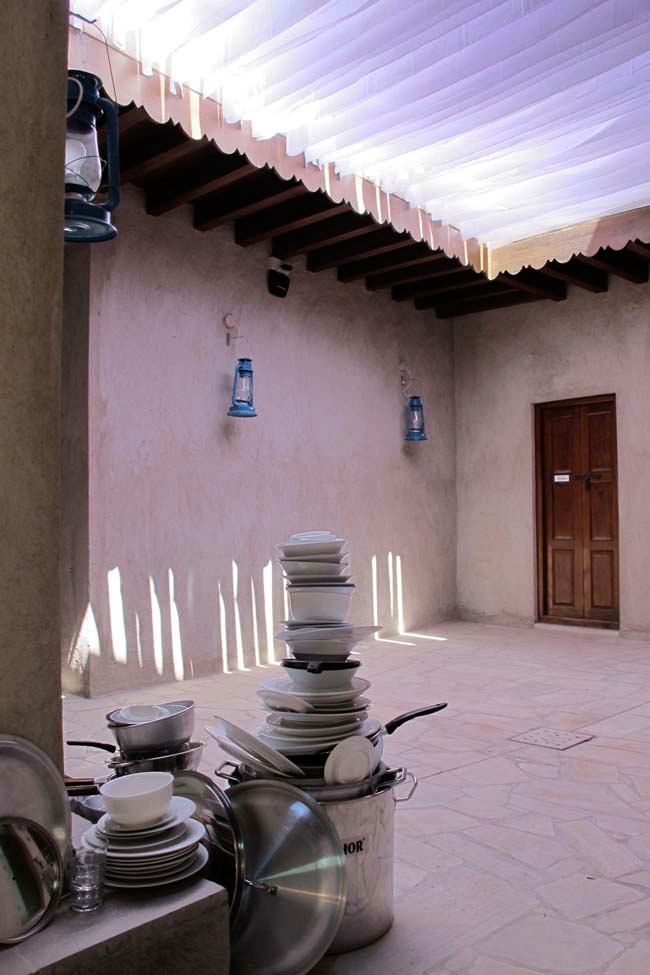Shows
Abbas Akhavan at House 44


House 44, a historical building in al-Bastakiya, Dubai, is home to an international residency program developed through a joint collaboration with the Delfina Foundation, Dubai Culture and Arts Authority, Tashkeel and Art Dubai, and the support of the British Council. From March 13th to the 20th, the heritage house presented the residency projects of Vancouver-based Iranian artist Abbas Akhavan and UK artist Tobias Collier, with Emirati artists Shamma al-Amri, Shaikha al-Mazrou and Hind Bin Demaithan, alongside works produced through previous Delfina residencies.
On the opening night at House 44, a local Emirati woman visiting the exhibition realized for the first time that the venue was actually the house she had lived in more than 30 years ago. She involuntarily began sharing her childhood stories to the other visitors at the exhibition, who were now her guests as she transformed into the “host” of House 44. As her role altered between guest and host, House 44 also oscillated between the private domestic space and the public realm.
Incidentally, one of the major themes that Abbas Akhavan explored during his residency is the relationship of home, guest and host. Akhavan’s latest series of site-specific installations, entitled “Variations on Guests and Ghosts,” is part of his ongoing research on domestic spaces. The first installation, Rest (2011), displays remnants of a 48-hour performance in which two European tourists were commissioned to rest in Akhavan’s bed in House 44. The work tackles issues of domestication and interventions in private spaces. It blurs the line between Akhavan’s status as a host and a guest at House 44, much like the Emirati viewer. Rest also shifts the emphasis of residencies from the artist’s end product to his time during the program, by presenting the experience itself as the end product.

Another key theme explored in Akhavan’s residency work is labor—both domestic and artistic. The second installation, Well (2011), is a functioning fountain made from a stack of dishes situated in the building’s internal courtyard. It references mass labor practices within the hospitality industry of al-Bastakiya, where textile shops, restaurants and laundry services cater to neighboring hotels and bed-and-breakfasts. Though the fountain seemingly suggests a relaxing atmosphere, the installation cross-references labor with themes of leisure and highlights the complex relationship that binds them.
Situated above Well is the third installation entitled Curtains (2011), comprising of over 30 bed sheets that hang delicately yet freely on a clothesline. Laundry is a common theme in Akhavan’s work as a signifier of class and status. The sheer number of sheets that have been washed and hung in the internal courtyard alludes to mass labor and the disparity in classes between the giving and receiving end of its products and services. Curtains is also a visual reference to the neighborhoods of lower socioeconomic standards, where people often dry their laundry out in the open, which is in contrast with wealthier communities where residents can afford more private or convenient means of laundry. In the external courtyard, Akhavan further explores the idea of class with Untitled (Laundry) (2011), where bundles of laundry, placed in trees that are visible from the windows of House 44, are reminiscent of clothes and linen left outside bed-and-breakfast establishments in al-Bastakiya to be collected by laundry services. Returned clean and ironed, often without the guest’s awareness or acknowledgment of the effort, the labor, and laborers, involved in the laundry are seemingly invisible.
Akhavan’s site-specific works successfully intervene with not only the architecture of House 44, but also with the socio-political environment of al-Bastakiya’s neighborhood. The artist’s ability to capture the local essence and engage with the venue makes his installations effortlessly relevant and deeply embedded in local culture, while operating closely within his artistic practice.







